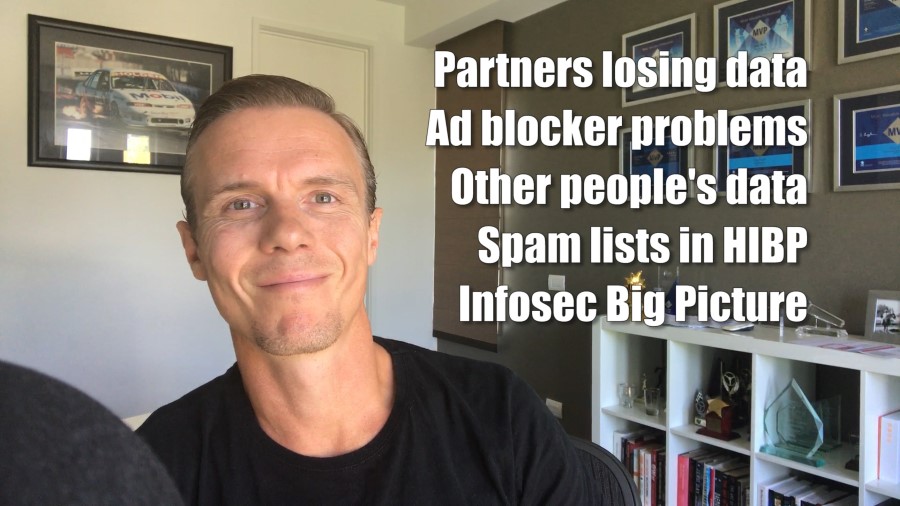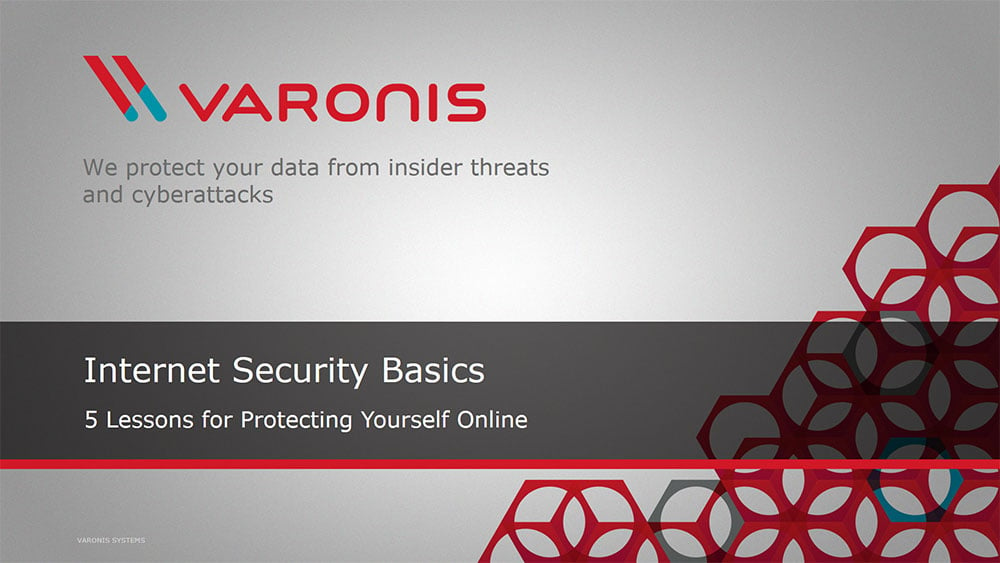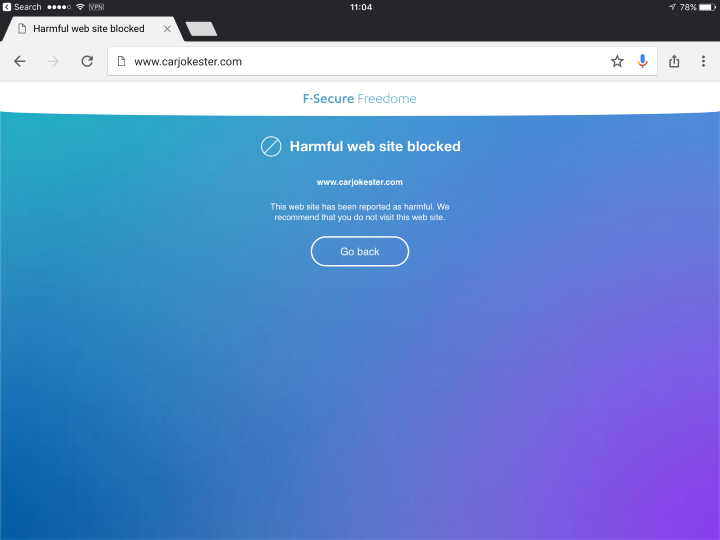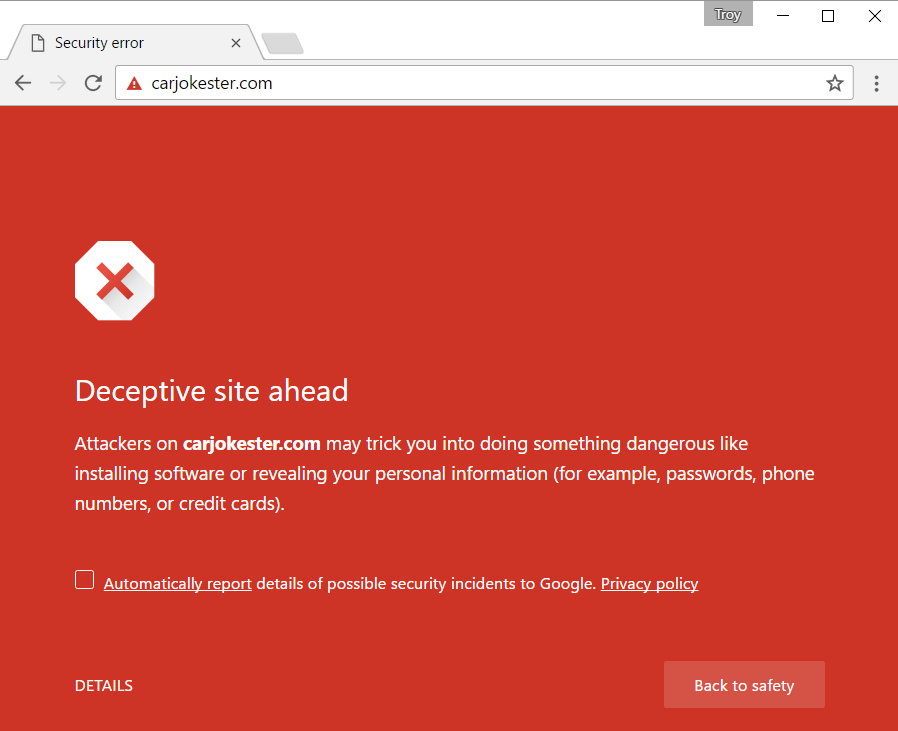Sponsored by: Raygun — Improve UX performance with Raygun Pulse — Installs in minutes — Try free for 30 days!
![10 ways for a conference to upset their speakers]()
I was preparing for an upcoming event the other day and very nonchalantly fired off a tweet whilst doing so:
Within short order, it somehow received hundreds of likes and retweets with many chiming in about the things that frustrated them about speaking at events. There was a lot shared that resonated with people and it struck me as odd, not least of which because almost every speaker at almost every tech conference contributes their time for free. This is news to many people - they think we're riding the speaker tour gravy train - and that makes it all the more unusual that conference organisers often make our lives harder than what they should be.
As the replies to that tweet rolled in, some patterns emerged that I thought I'd jot down here in the hope that they can be seen from the conference organiser's side and perhaps used to make life a little easier on everyone in the future. Here's the top 10:
1. Forcing a slide template on people
This is obviously the logical place to start and I want to explain exactly what the problem here is, particularly given a few people retorted with "a well-designed deck should be able to simply apply another template anyway".
A conference talk is about so much more than just words or pictures on a screen that you talk to. You're trying to create a mood and convey emotion via the imagery you use. In my case, this particular talk calls for a lot of dark themes and shady characters; augmenting this with fluorescent logos totally changes the feel of the talk. The time I'd put into refining a cohesive theme that matched the subject matter and complimented the talk felt somewhat wasted and that's a real shame not just because of how it now makes me feel about the talk, but because it'll detract from the audience experience too.
Adorning every slide with a conference logo or template does nothing for the attendees of the event. I mean they're not seeing it and saying "Oh yeah, I'm at the ABC Conference, I totally forgot until I saw that massive logo on the screen". Now I totally get asking presenters not to adorn every slide with their company logo or push their product ad nauseam because that experience sucks too, but they need to be provided with free artistic reign.
This is what we as both speakers and attendees want: we want to see lovingly-crafted visuals, we want to be told a story that we can get engrossed in and more than anything, we want to learn and be entertained. Standard conference slides do nothing to further any of those objectives, indeed they actually detract from it.
Oh - and if a conference requests specific fonts or slide software (i.e. not allowing the Mac folks to use Keynote), that's probably not going to go down well!
2. Asking for slides in advance
This is probably the most common complaint I saw in response to my earlier tweet. Some events request slides weeks or even months in advance and it makes things absolutely painful for a number of reasons.
One of those reasons is that in the tech industry, a lot can change even day by day. What makes sense today is not necessarily going to be accurate next month. Yes, there's usually a provision to submit revisions up until the talk itself, but it causes a heap of other problems too. This year I've probably done 50 separate talks, courses, webinars, user groups and other events I have to prepare for. Trying to tie things down way in advance of when they're actually needed whilst also trying to work on the things I actually need to do in the short term makes things enormously difficult on me. Frankly, I end up submitting something - anything - just to tick the box then heavily revising it closer to the date on my own schedule.
It also begs the questions "why"? What value does it really provide the event to have content so far in advance? Perhaps they want to review and assess for compliance to the standard template in which case, see the previous point. Maybe they want to censor or modify in other ways which worries me greatly because it implies that from looking at pictures or written words alone they can assume whether the talk is appropriate. The reason that worries me is because it's such a tiny part of the overall experience and without seeing it in the context of the narrative that goes alongside it, it's very easy to take them out of context. If the conference organisers are making requests like this to keep speakers in line because they may not deliver on time, well, that's another issue altogether around who they're choosing to invite to the event in the first place.
Lastly, if something must be provided in advance, crappy web interfaces which struggle with big presos ain't fun. I had to strip out content of a recent one just to get down beneath the size limit! I've had decks with hundreds of MBs (thank you, embedded video) and making assumptions about the size of them or enforcing maximums is just bad news.
3. Asking for slides after the talk
I get asked this a lot and I pretty much always decline. That may sound weird so let me explain:
As I just pointed out in the previous point, slides and anything else that appears on the screen is a very small part of the overall talk. They don't convey the tone of the presenter, their mannerisms or movements and looking at them in isolation without being seen as part of the entire talk is like reading song lyrics without hearing the melody.
I've had cases in the past where people have criticised individual slides after viewing them offline and having never attended the talk. This is from talks that have been very highly rated - sometimes the top-rated talk at major international conferences - because in isolation, the slide is misleading, inappropriate or just plain sucks.
Now having said all that, I'm happy for talks to be recorded and distributed far and wide. That's awesome because it allows people to experience the talk as it was intended to be delivered. It's never quite the same as being there (when I watch my talks later, you can never hear the same levels of laughter and audience engagement), but at least it ensures that everything is seen in context and that makes all the difference.
These first 3 points in this post have actually led me to ditch slides altogether in a number of upcoming talks. I won't say which ones, but they'll be 100% demos and no more slide dramas :)
4. Screens that are only 4:3 (and other AV deficiencies)
There's nothing worse than a beautifully crafted presentation at "normal" resolution (which is 16:9 in 90%+ of cases) then being forced into a 4:3 window therefore adorning it with horizontal black bars top and bottom while losing a big whack of the screen real estate. It's a terrible experience for all and I've often felt that sinking feeling of turning up at a venue and seeing a near-square screen.
In fairness, conference organisers don't always have a lot of choice if that's what's running at the venue already. However, they can definitely flag this with speakers early and as much as I don't want to have to go and redesign my slides, I'd rather that than arrive and have my preso look kinda crap.
Same again if there's not going to be audio out from the machine. That's not very common but I have seen it and it can cause me to either rejig the preso or not show other things on the screen I might have otherwise done. A 16:9 screen and full audio capabilities are the minimum bar and anything beneath that needs to be called out very clearly.
5. Badly prepared rooms
There's a bunch of things that can go wrong here and one is the mic setup. Anything short of a lapel mic is going to make life hard, for example a fixed lectern mic. One of the most valuable speaker training events I attended talked a lot about "stage presence"; how you move, where you position yourself, when you return to the same spot - all of these things matter and accomplished speakers plan this. That goes out the window as soon as you're tied to a single spot courtesy of a fixed mic. (Incidentally, I referred to the resultant lack of movement as "The statue" in my blog post last year about speaker anti-patterns.)
Handheld mics aren't that much better, in part because they restrict the movement of your hands and gestures but also because it makes demos when you return to the machine painful. As a speaker, you want to feel both free and natural (yeah, I know, sounds very hippy-like but it's important) and that means not thinking at all about the mic setup.
Further to that, there has to be an AV person handy to get things like mic levels right and balance audio levels from the machine if you've got sound coming out of there. I've been at an event in the past where a third of my screen was missing in the minutes before my talk was due to begin and I'm literally running around the conference centre trying to find someone to help fix it. That sucked and it was one of several factors that will keep me away from that event again in the future.
6. Conference laptops are (usually) painful
I prepare all my demos meticulously. I have very specific software I need access to. I fire up certain apps I'm going to need before I start. I have backups of my demos. I have other things on my machine I may need access to, particularly come question time. My machine is essential to the success of my talk.
Conference laptops are sometimes provided as an option which is fine, but other times strongly recommended or even mandated. For any speaker doing anything more than a simple set of slides, this makes us very nervous as it's an unknown quantity.
Look - I get it - having a conference machine gives the organisers predictability in terms of all the AV working in a pre-tested fashion and it also means a faster rotation of speakers. There are events where that makes sense; the WIRED security event I did in London in October was a case where it worked well but that was a 20-minute talk where the one demo I had I turned into a video just beforehand.
Particularly for most normal tech conferences though where you've got multiple simultaneous tracks and both speakers and attendees rotating between rooms and sufficient time to setup, give the speaker the choice. Be really cautious about mandating a conference machine because even if they don't outright say it, that's a move that's going to make a bunch of people feel very nervous.
7. Not covering T&E is a massive no-no
When a commercial conference running to make a profit asks me to come and talk and pay my own way there, many words go through my mind. None of them include "sure, that sounds lovely"! I've had this happen multiple times and the invite is usually accompanied by a rationale along the lines of "but think of what it will do for your profile". Let me explain what this actually means:
Every conference talk is a big commitment on behalf of those who take speaking seriously. There are many, many hours of preparation and rehearsals and that's before you even jump on a plane. Then - especially for people like me in a faraway land - you fly for ages and turn up jet lagged. You need time to recover, then of course to speak then get yourself back home again. The bottom line is that it's a one week commitment at the very least when you consider everything and that's a week where speakers can't otherwise earn a living or spend time with their family or do any number of other things.
I had one a little while back where they wanted me to go to Hong Kong and pay my own way. Along with the usual profile-building answer, their rationale was "Bono spoke at the event once". That's great, good for Bono but no, I won't be paying to attend your event so that you can run a commercial show. IMHO, this shows a total lack of respect for the speaker and it implies that the conference is doing them a favour, not the other way around. I'll come back to this at the end, but it has to be a mutually beneficial affair and not covering the bare necessities such as travel and expenses is far from that.
8. Bad hotels are bad
I've ended up in all manner of accommodation over the years and it's ranged from very seedy to very out of this world. Most conference speakers (myself included) have no expectation of the latter, but we certainly don't expect the former. As a speaker, you want to feel like the organisers really value your contribution and the way you're looked after reflects that.
When you end up in a seedy hotel as I did on my last trip, it can really make the event unpleasant. In that case I had no desk to work from, no room to move around should I wish to rehearse and not even an iron to make myself presentable. Other poor hotels have had issues with noise (awesome when you're jet-lagged), no option of room service (same again re jet-lagged when you just want to stay in) or other shortcuts reflective of going budget at the expense of speaker comfort.
Most of the hotels I stay in are fine. Not "great", but "fine" in that they're often small (especially in Europe) and usually pretty basic but they're clean, convenient and offer the basic necessities. Bonus points if it has a bath and I can lie back and soak with a cold beer after a long flight!
9. Not allowing me to arrange my own flights
Many conference events that do cover T&E offer to do travel bookings on behalf of the speaker. I'm all for that with hotels as it's a no-brainer (the issues in the previous point aside), but I've had too many dramas with events booking flights to ever do that again.
The main issue is that once there's you, the event organisers and a travel agent involved, it can be really hard to communicate about even simple things. When it comes to something like changing flights or doing anything "non-standard" with your travel, it can become a nightmare. I've had cases in the past where I've needed to go from one event to another and shuffle my travel which has just turned into an absolute nightmare.
These days, I always book my own travel and invoice the event. I have no problem whatsoever with the event organiser saying "we'll give you $X for flights" and then I'll do the rest. It lets me choose my airline, the ports and times I travel, the class I travel in and most importantly, it gives me full control of any changes I may need to make. Reasonable conferences will support speakers like this.
One caveat on this though: if a speaker is going to be fronting their own cash to travel - particularly when it's internationally - they want to get reimbursed pretty smartly. I've had to chase money way too hard in the past and this should just never happen, for obvious reasons.
10. Not treating conferences as a mutually-beneficial relationship
Speakers get something out of conferences too and whether you call it profile or networking or exposure or whatever, we do it because it offers an upside in our lives. For me, it's all those things and frankly, the excitement of speaking to a large audience too. When I go to a good event that's well-organised and it ticks all those boxes, it leaves a lasting impression on me.
A perfect example of this is the NDC conferences I do in London, Oslo and Sydney each year. Because those guys just get it - I mean everything I've written above - I keep coming back and doing all their events. I've done good talks that rated highly so they want me back and they sell tickets based on my being there (along with the presence of many other top speakers, of course) and I want to keep coming back because they always look after their speakers so well. It's a symbiotic relationship.
I presently have 26 events I've been asked to in 2017 that I've said "no" to and only above half a dozen I've agreed to do. Some of the rejected ones I've done before and had bad experiences with along the lines of what I've written above, others I simply don't know from a bar of soap. But what I will say is that speakers talk; they'll tell others which events really looked after them and which ones were poorly run. For conference organisers, they've got to get this stuff right if they want good speakers standing up there helping to make their show a success.
Because conferences are meant to be mutually beneficial
Those are the big issues that came to my mind after hearing everyone's feedback following that initial off-handed tweet. But I'm also conscious it's very biased on behalf of the speaker and I'm sure there are conference organisers out there that have their own list of ways speakers upset them. Unreliable, unprepared, unprofessional, drunk, etc - there must be a list! If someone writes it then I'll happily share it because I guarantee you, many speakers are far from perfect too.
But if you're like me and you get around to a lot of events, tell me what I've missed. In all likelihood, I'll be pointing conference organisers to this post (and the comments) in the future and I'm hoping this helps them run better events for everyone involved.
![]()





























































































